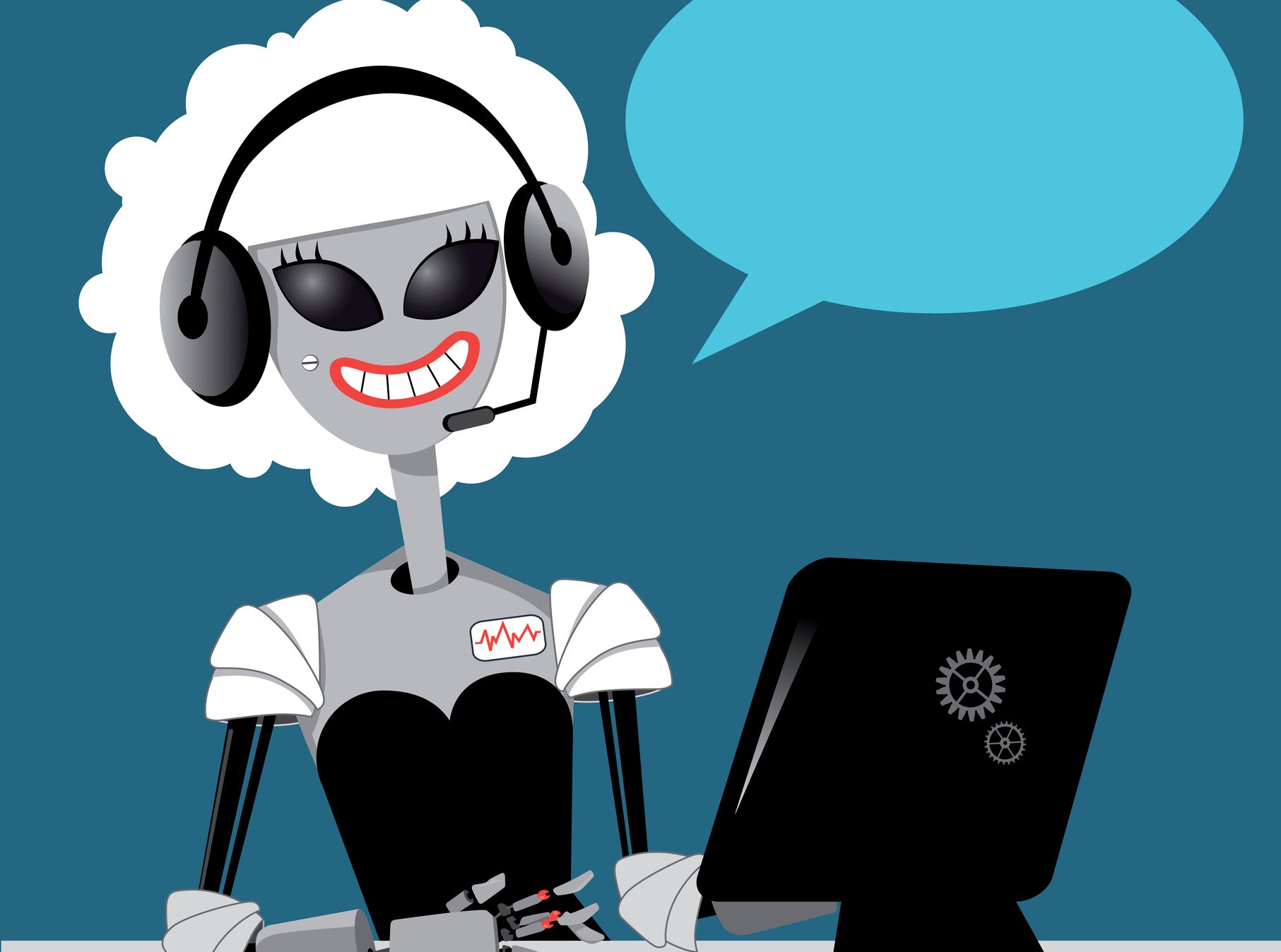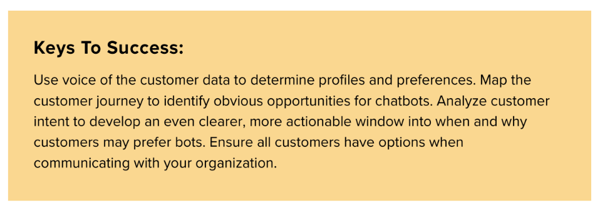
Chatbots were one of the biggest trends of 2018 as customer service leaders jumped to join the latest craze and deploy chabots across popular channels like web chat and Facebook Messenger. Ironically, Gartner predicts that 40% of those deployed in 2018 will be decommissioned (How to Win with AI and Chatbot in Your Customer Service Operation.)
Last month, I shared part 1 of this blog series, which dove into some top chatbot mistakes. There are many, and companies are struggling to get it right. In part 2 of this series, you will learn how to build a chatbot that takes a customer-centric approach, one that will truly amplify the customer experience.
A Customer-Centric Chatbot
Artificial intelligence (AI) is becoming more robust by the second. Innovators are simultaneously becoming more creative and astute in finding the synergy between AI and the self-service experience.
As a result, solution providers are consistently delivering more powerful, functional chatbot solutions. That positive innovation will surely continue in the months and years ahead.
The opportunity for bots to meaningfully impact the customer experience, consequently, continues to grow.
Organizations will squander that opportunity, however, if they continue to fall victim to mistakes like ignoring the impact on the customer, dismissing customer preference, downplaying the omnichannel revolution, forgetting about the agent experience, and missing the mark on data design. Their bots—no matter how promising in theory—will not be customer-centric.
If, however, they transform that list of mistakes into a blueprint for excellence, they will ensure bots live up to their promise. They will justify the relentless hype that they and their peers are currently devoting to the technology.
The Value Test
Technology’s greatness comes not from its features but from its functionality. What is the purpose of the particular solution? What value does it create?
To pass a test for customer centricity, a bot must generate value for customers. There must be a reason—beyond the vanity of the bot technology or the theoretical potential to reduce call volume—for introducing bots into the customer experience journey.
Bots, quite simply, must make the experience better for customers.
When leveraging a bot to create value for customers, organizations will want to prioritize several factors.
Does the bot make sense?
Chatbot technology is robust, but it is not suitable for all issues. There are scenarios in which a conventional website of a self-service platform will prove more than sufficient for customers. There are also scenarios in which support from an agent will be more valuable.
Customer-centric organizations do not insert bots into issues that are better-suited for agents. They instead identify opportunities in which the bot will represent the best possible option for completing a particular task.
Is the conversation natural?
Do not conflate chatbots with the broader idea of self-service.
Self-service is not a new concept. Customers have long had the ability to resolve their own problems (or at least attempt to resolve their own problems) using static FAQ pages or voice menus.
Chatbots fill two notable voids common to the self-service platforms of years’ past. They can engage in natural conversations with customers, and they can adapt based on context and past experiences.
Those two qualities—natural communication and contextual agility—help distinguish customer-centric bots from problematic self-service offerings.
Does it contribute to the FP3 experience?
The best customer experience is frictionless, personalized, predictive, and proactive—what is known as the “FP3” experience. A customer-centric bot helps to drive this.
Ideally, it will use intelligence to create an easy, personalized self-service experience for customers. Cognizant of who the customer is, why the customer is contacting, and what the customer really wants, the bot will provide a fast, valuable resolution to most issues.
In the event that the bot cannot provide a resolution, it will at least help the customer get one. It will direct the customer (and the customer’s data) to the right agent, ensuring a seamless, resolute experience upon transfer.
The Preference Test
Customers of all generations regularly engage in digital channels. They also identify waiting on hold as one of their top complaints.
Clearly, they have a potential interest in chatbots. Fifty-five percent, in fact, are already comfortable with the idea of using chatbots for self-service.
These realities do not, however, amount to proof that organizations should impose bots on all customers, for all issues, in all touch points. There still will be scenarios in which some customers will prefer alternative engagement options. There definitely will be scenarios in which customers will prefer bots that interact in a particular fashion.
Which issues would customers prefer to handle on their own?
By studying volume—as well as the intent behind that volume—the organization can determine when particular customer would prefer to self-serve. Using that data, it can determine when an enhanced self-service tool, such as a chatbot, would lead to a better experience for customers.
Which issues are best-suited for chat or messaging?
Although today’s bots can (and should) exist in a multitude of contact channels, the most common applications involve live chat or messaging. Bots are very well-suited for these environments (hence the specific emphasis on “chatbots”).
It, therefore, makes sense to consider the types of issues customers would prefer to handle in such environments. By helping to enhance and scale the live chat offering, bots ensure organizations can meet this particular customer preference.
Does the customer really have a choice?
The aforementioned tests help an organization understand the scenarios in which a chatbot might be preferable or acceptable. They do not guarantee that every customer will actually like the bot-driven experience.
A truly customer-centric organization recognizes this possibility. It recognizes that customer who are theoretically comfortable with chabots may prefer a live agent in a particular situation, and it gives them the choice to either bypass the bot or easily escalate to a live agent upon hitting a dead end.

For other chatbot tests, including the Omnichannel Test and Agent Empowerment Test, read our complete whitepaper, The State of the Chabot.

